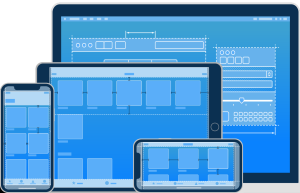
In today’s fast-changing digital world, e-commerce businesses face many challenges and opportunities. To stay competitive, they must make data-driven decisions. This requires real-time insights into customer behavior, sales trends, inventory, and marketing. Power BI helps e-commerce businesses by turning their data into easy-to-read charts and graphs. This makes it simple to see important information, like which products are selling the best or which marketing efforts are working. With Power BI, business owners can quickly understand their sales trends and customer behaviors, helping them make smarter decisions to grow their business.
Basics of Power BI:
Power BI, a business analytics tool from Microsoft, helps by turning raw data into clear, actionable reports and dashboards. E-commerce companies can track key performance indicators (KPIs) like conversion rates, average order value, and customer acquisition costs in real-time. They can also monitor sales performance across products, categories, and time periods to spot trends and irregularities. Furthermore, Power BI provides customer insights by analyzing demographics, purchasing behavior, and preferences through detailed segmentation.
Let’s Deep Dive into Key Performance Parameters:
This blog explores how Power BI can revolutionize the e-commerce industry by delving into crucial performance parameters such as website performance, financial metrics, marketing effectiveness, customer metrics, sales performance, and operational efficiency.
1. Website Performance:
Website performance is crucial for e-commerce. A slow or unresponsive site can lead to lost clients and sales. Power BI integrates with tools like Google Analytics to provide a comprehensive view of website performance. By visualizing metrics such as page load times, bounce rates, and user engagement, businesses can identify and address bottlenecks. Interactive dashboards allow stakeholders to resolve issues quickly.
2. Financial Metrics:
Financial health is crucial for the long-term success of any e-commerce organization. Power BI allows organizations to track critical financial data like sales, profit margins, and cash flow. Power BI can automate financial data gathering and visualization by linking to financial databases and accounting software. This saves time and guarantees accuracy. Customizable dashboards and reports enable organizations to track their financial performance in real-time, resulting in better decision-making and strategic planning.
3. Marketing Effectiveness:
Understanding the impact of marketing initiatives is critical to optimizing ROI. Power BI can combine data from several marketing channels, including social media, email campaigns, and paid advertising. This allows e-commerce enterprises to measure the success of their marketing campaigns. Metrics such as conversion rates, cost per acquisition, and customer lifetime value can be used to determine the performance of marketing initiatives. Businesses that identify the most effective channels and campaigns may deploy their marketing money more efficiently and get greater results.
4. Customer Metrics:
Customer satisfaction and loyalty are paramount in the e-commerce industry. Power BI can help businesses understand their customers better by analyzing metrics such as customer satisfaction scores, Net Promoter Scores (NPS), and customer feedback. By integrating with customer relationship management (CRM) systems, Power BI provides a comprehensive view of customer behavior and preferences. This insight allows businesses to tailor their offerings and improve customer experiences, leading to increased satisfaction and retention.
5. Sales Performance:
Sales performance is a clear measure of corporate success. Power BI has powerful features for measuring sales KPIs including total sales, average order value, and sales by product category. Power BI delivers real-time sales performance updates by linking to sales databases and e-commerce systems. Businesses use visualizations and trend analysis to uncover top-selling items, seasonal trends, and sales possibilities. This provides more precise forecasting and inventory management, allowing firms to satisfy client demand without overstocking.
6. Operational Efficiency:
Operational efficiency has a substantial influence on profitability. Power BI can assist businesses improve operational workflows by offering insights into KPIs like order processing time, inventory levels, and supply chain performance. Power BI integrates with enterprise resource planning (ERP) systems to provide a unified picture of operations while emphasizing opportunities for improvement. Dashboards may be tailored to measure important operational KPIs, assisting organizations in optimizing their operations, lowering costs, and increasing overall efficiency.
Power BI can greatly improve the e-commerce sector by optimizing average delivery time and return rate. For average delivery time, Power BI offers real-time data visualization and tracking, allowing organizations to discover bottlenecks in their delivery process and simplify processes for faster deliveries. Addressing return percentage, Power BI provides precise information on return patterns, assisting businesses in identifying common issues like as product quality or delivery faults and implementing methods to decrease returns and increase customer happiness.
Conclusion:
In conclusion, Power BI is a crucial tool for the e-commerce industry, providing insights into performance metrics. E-commerce businesses can use Power BI to improve website performance, financial health, marketing, customer satisfaction, sales, and operations. In a data-driven industry, employing expert Power BI consulting services offers the analytics needed to stay competitive and achieve sustainable growth.







No comment yet, add your voice below!